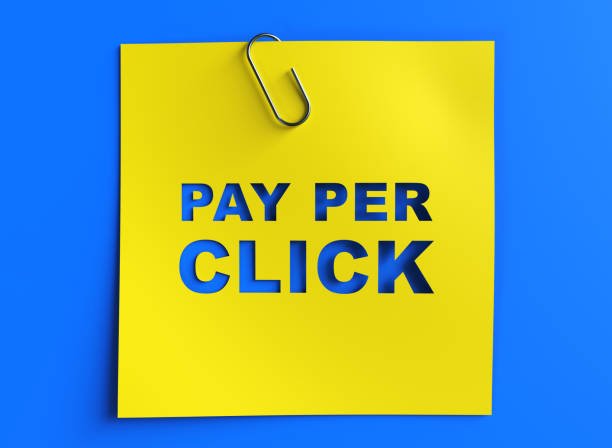
The Costliest PPC Mistakes and How to Steer Clear of Them
PPC marketing demands continuous focus, assessment, and refinement to guarantee maximum return on investment.
Staying proactive and informed, PPC advertising can be effectively used to propel business expansion and success..
Pay-Per-Click (PPC) advertising is a powerful tool for driving traffic and generating leads. But if done incorrectly, it can end up being an expensive exercise with little return on investment.
In this article, we will examine some of the costly mistakes in PPC and provide valuable tips on how to avoid them, ensuring your campaigns are both effective and efficient.
The Costliest PPC Mistakes and How to Steer Clear of Them

#1. Neglecting Keyword Research
The Mistake:
One of the most common and expensive mistakes in PPC advertising is inadequate keyword research. Using broad, irrelevant, or highly competitive keywords can lead to high costs with low conversion rates.
Failing to conduct comprehensive keyword research puts you at risk of focusing on terms that don't match your audience's search intent, drawing in unqualified traffic, and spending your budget on clicks that are unlikely to result in conversions.
Additionally, competitive keywords can drive up your cost-per-click (CPC), making it difficult to achieve a positive return on investment (ROI).
How to Steer Clear:
#1. Use Keyword Tools: Leverage tools like Google Keyword Planner, SEMrush, and Ahrefs to find relevant keywords with a good balance of search volume and competition.
These tools provide insights into keyword popularity, competition levels, and estimated CPCs, helping you make informed decisions.
#2. Negative Keywords: Incorporate negative keywords to filter out irrelevant terms from your product or service. This will help eliminate unwanted traffic and ensure that your ads are displayed only to users genuinely interested in your offerings.
It's important to regularly review and revise your list of negative keywords to stay aligned with evolving search behaviors.
#3. Long-Tail Keywords: Focus on long-tail keywords which are more specific and less competitive, leading to higher conversion rates and lower costs.
The search volumes for long-tail keywords are generally lower, but they are highly specific, indicating that users who search for these terms are usually closer to deciding on a purchase.
#4. Regular Keyword Audits: Conduct regular audits of your keyword list to ensure they remain relevant and effective.
Search trends and user behavior can change over time, so it's essential to stay updated and make adjustments as needed.
#5. Competitor Analysis: Analyze your competitors' keywords to identify gaps and opportunities. Tools like SpyFu and AdBeat allow you to see which keywords your competitors are bidding on and how successful they are.
This can help you discover new keywords to target or avoid overly competitive terms.
#2. Ignoring Ad Copy Optimization
The Mistake:
Poorly written ad copy that fails to capture attention or convey the value proposition can result in low click-through rates (CTR) and wasted ad spend.
As the online advertising world is progressing rapidly, you have mere seconds to grab a user's attention and convince them to click on your ad. If your ad copy is generic, unclear, or lacks a compelling message, it won't stand out amidst the competition.
Additionally, if the ad copy doesn't clearly communicate the benefits or unique selling points of your product or service, potential customers may not feel motivated to engage with your ad, leading to low engagement and poor campaign performance.
How to Steer Clear:
#1. Compelling Headlines: Write engaging headlines that address the user's intent and pain points.
#2. Clear Call-to-Action (CTA): Include a strong, clear CTA that tells users exactly what you want them to do.
#3. A/B Testing: Regularly perform A/B testing on your ad copies to determine which versions resonate best with your audience.
#3. Overlooking Landing Page Relevance
The Mistake:
Driving traffic to a generic or irrelevant landing page can increase bounce rates and decrease conversion rates, ultimately wasting your ad spend. When users click on your ad, they expect to find content that directly corresponds to the promise made in the ad.
If the landing page fails to meet their expectations, whether due to irrelevant content, lack of specific information, or a disjointed user experience they are likely to leave immediately.
This not only results in a higher bounce rate but also means that the money spent on acquiring that click was effectively wasted, as it did not lead to a conversion.
How to Steer Clear:
#1. Landing Page Alignment: Ensure your landing page content is closely aligned with the ad copy and keywords. The user should find what they were promised in the ad.
#2. Mobile Optimization: Make sure your landing pages are mobile-friendly to cater to the increasing number of mobile users.
#3. Fast Loading Speed: Optimize your landing page loading speed. A slow loading page can lead to high bounce rates.
#4. Failing to Monitor and Adjust Campaigns
The Mistake:
Setting up a PPC campaign and then neglecting to monitor its performance can lead to ongoing inefficiencies and wasted budget. PPC campaigns are dynamic and require constant attention to ensure they are running effectively.
Without regular monitoring, you might not notice when certain keywords stop performing, when your ad copy needs refreshing, or when your competitors change their strategies.
This lack of oversight can result in money being spent on underperforming ads, missed opportunities for optimization, and ultimately, a poor return on investment (ROI).
How to Steer Clear:
#1. Regular Monitoring: Frequently check your campaign performance and metrics such as CTR, conversion rates, and cost-per-click (CPC).
#2. Adjust Bids: Continuously adjust your bids based on performance data to maximize ROI.
#3. Utilize Analytics: Use tools like Google Analytics to gain deeper insights into your campaign performance and user behavior.
#5. Not Utilizing Ad Extensions
The Mistake:
Ignoring ad extensions means missing out on additional space to provide valuable information and improve your ad’s visibility and click-through rate (CTR).
Ad extensions are free tools that enhance your ads with extra information, making them more compelling and useful to potential customers.
If you are not using ad extensions, you limit the effectiveness of your ads, reduce their visibility on the search results page, and miss opportunities to drive higher engagement and conversions.
How to Steer Clear:
#1. Implement Ad Extensions: Use various ad extensions such as sitelink, callout, structured snippets, and location extensions to enhance your ads.
#2. Relevance and Value: Ensure the extensions provide relevant and valuable information to the user, such as additional product details or direct links to specific pages.
#6. Mismanaging Budget Allocation
The Mistake:
Improper budget allocation can lead to overspending on underperforming campaigns or not investing enough in high-performing ones.
When you don’t strategically distribute your budget across different campaigns, ad groups, or keywords, you risk wasting money on ads that don’t deliver results.
Conversely, failing to adequately fund successful campaigns can result in missed opportunities for maximizing conversions and revenue.
Effective budget management is crucial for ensuring that your PPC efforts yield the highest possible return on investment (ROI).
How to Steer Clear:
#1. Budget Analysis: Regularly review and analyze your budget allocation across different campaigns and ad groups.
#2. ROI Focus: Allocate more budget to high-performing campaigns and reduce spend on those that are not delivering results.
#3. Seasonal Adjustments: Adjust your budget based on seasonal trends and peak times for your business.
#7. Ignoring Quality Score
The Mistake:
A low Quality Score can lead to higher cost-per-click (CPC) and poor ad placements, increasing your overall costs without delivering better results.
Quality Score is a critical metric used by Google to determine the relevance and quality of your ads, keywords, and landing pages.
A low Quality Score indicates that your ads are not meeting the expected standards, which can result in higher costs to achieve the same ad positions as your competitors.
This can significantly impact your PPC campaign’s efficiency and effectiveness, leading to wasted budget and missed opportunities.
How to Steer Clear:
#1. Quality Content: Ensure your ad copy and landing pages are of high quality and relevant to the keywords you are targeting.
#2. Improve User Experience: Focus on providing a great user experience on your landing pages, including easy navigation and valuable content.
#3. Continuous Optimization: Continuously optimize your ads and landing pages based on performance data and user feedback.
Conclusion
Avoiding these common PPC mistakes can save you significant amounts of money and improve the overall effectiveness of your campaigns.
Investing time in proper keyword research, ad copy optimization, landing page relevance, continuous monitoring, utilizing ad extensions, managing your budget wisely, and maintaining a high Quality Score, you can steer clear of costly pitfalls and achieve greater success with your PPC efforts.